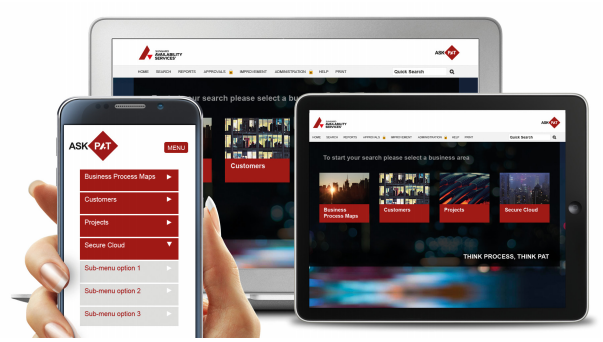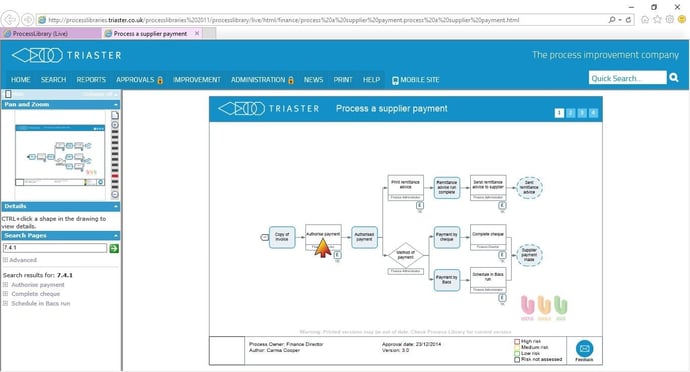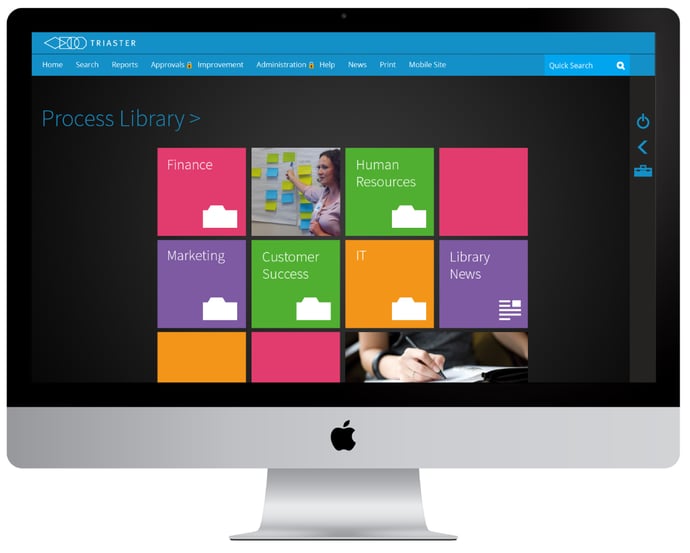Business Process Management software is designed to make business improvement as easy and accurate as possible – it is a means to an end and that end is why it is worth purchasing. However, Business Process Management vendors often have a problem communicating exactly why you should care even though one of the big benefits is return on investment.
In fact, according to a Gartner survey, 80% of organisations conducting Business Process Management (BPM) projects will experience an internal rate of return better than 15%
The problem is that although many organisations are in need of a business management system, few are aware of the improvement capabilities that a good BPM can deliver.
So next follows ten reasons why a BPM system is necessary to any contemporary organisation:

1. Business Process Management Improves Efficiency:
Here’s a question for you, when a process is broken or wasteful in your organisation, do you know how to identify it?
There are certainly processes in your organisation that could be improved, some may be wasteful and others may be completely broken – but how will you know if you don’t have the tools to define and measure a process?
The first step is to capture your processes through process mapping, find the wasteful or broken processes and work backwards from there – it’s sort of like cleaning your house by starting with the dirtiest parts first (like the bathroom and kitchen) before you tackle the less necessary cleaning jobs.
2. BPM Supports Employee Succession Planning and Knowledge Capture:
Although you’d probably love to retain all your staff, people move on for different reasons and when they do, you’ll want as smooth a transition as possible.
BPM offers a clear method to capture and store important information – this is where process maps come in again.
With process mapping, you can capture every area of the organisation and the tasks that are carried out so the knowledge transfer is as smooth as possible.
Documenting information in this way allows you to easily share processes, policies and guidance documents among your workforce, which is the best way to make sure that business knowledge remains in your organisation.
3. It Provides a Framework for Continuous Improvement:
Here’s another question for you, are you able to easily define the core tasks you need to perform daily in your company for others? The harder question is, can you define the tasks performed by other employees?
When you can’t identify what you do, you can’t identify when it’s failing and when you can’t do that, you cannot achieve your improvement objectives. A good BPM system will provide organisation-wide oversight, bring clarity to your job role and other roles that were previously isolated.
Continual improvement means looking closely at your business processes and making small, incremental improvements based on data-driven evidence. However, continuous improvement will only be successful if you have the full support and engagement of your employees.

If you would like to learn more about how to model real continuous improvement in your business then please read the business analysis report...
4. You Can Retire Your Paper-based System:
Many organisations are still using paper-based systems to manage their documents, forms, manuals and processes.
The problem with this is that when your business starts to grow, you will eventually need to file and manage thousands of documents. How user friendly is that? How easy is it for employees to find the right process for health and safety? How easy is it to find step-by-step guides for specific processes? This situation can quickly become a management nightmare.
BPM can transfer all your paper-based documentation into process maps available on one searchable system and makes finding it as simple as typing in a query to bring up the appropriate captured process - this saves your employees time and makes sure crucial guidelines and standards are upheld.
5. BPM Supports the Implementation of Other IT Systems:
The implementation of a new software system can cause problems between IT and the rest of the business, especially if communication surrounding the implementation is poor. BPM can support other systems such as Enterprise Resource Planning (ERP) - as it allows you to have a complete overview of everything your business does.
It is crucial that any BPM system you purchase will support the specific needs of the business beforehand – there’s nothing worse than purchasing a management system that doesn’t have the flexibility to cover all your business needs (so do your BPM research).
6. It Will Help Your Organisation to Eliminate Silos:
Most employees in an organisation won’t know the specifics of their colleagues job roles from a bar of soap. When a process from one area overlaps into another, employees will certainly need to identify the other department responsible instead of living in a land of continual confusion.
The great thing about BPM is that it creates linkages between departments. By identifying the key processes in the key areas, capturing them via process maps and sharing them in a usable way, all staff can know what they need to and who they need to talk to in order to perform their tasks (thus saving time and money).
Inter-connectivity is so important, no matter how large or small your organisation is. Read our ‘breaking down silos’ article for a more in-depth analysis on how to eliminate silos in your workplace.

7. It Will Help You Establish an Effective Quality Strategy:
Quality is becoming more and more important for contemporary businesses. Customers want it, employees want it and your marketing department is probably quietly praying for it.
The risk of quality failure includes:
- Loss of trust and brand loyality,
- Costly penalties from regulatory bodies
- Wasteful processes that suck time and money from your organisation.
- A sub-standard product or service
Businesses must place quality at the heart of their organisation to be effective – that’s where BPM can help.
8. Your Change Initiatives Will be Supported:
The ability to model change before you implement it is reason enough to have a BPM system. Modelling change allows you to measure the possible outcomes of any improvement project. Being able to eliminate failure before it happens is the golden goose that keeps on giving.
Find out how BPM can support a change initiative in greater depth.
9. Business Processes Management Systems Increase Employee Engagement:
BPM provides an excellent framework and support structure to help employees adjust to and engage with a new way of working.
In order for your Business Process Management system to be successful, you need employee buy-in from the start – you can’t map out your organisation’s processes without listening to how those processes are performed by the people who actually perform them.
The upside to this necessary first step is that you have employee engagement from day one. An employee who is involved with the implementation of the new process, is more likely to use it and more likely to want to see it succeed.
You can find more information on employee engagement by reading the article.

10. It supports and Underpins a Consistent Working Culture:
Inconsistent working can result in inefficiencies and an inconsistency of outcome in business. BPM systems ensure that your business processes are made accessible to the whole organisation.
From there, it’s important to document what you want your employees to do, make it easy for them to access it (on a daily basis if necessary) and follow it.
However, for this to be effective, you must ensure that there is a change in culture to support this, otherwise, you may risk impacting the long-term sustainability of such a project.
Essential Elements to the Success of Your BPM System Before You Even Start:
A BPM system will only be successful in your business if:
- Senior stakeholders support the project from the start.
- Your system is user-friendly and used by your employees consistently.
If you are interested in reading more on the value of BPM systems, read this article on the problems Business Process Management can solve
or download our Business Improvement White Paper which follows how 8 customers turned their process problems into improvement triumphs
Related Articles
Before You Buy Business Process Management Software: 7 Key Questions to Ask
How much does Business Process Management (BPM) software cost?
Written by Brad Fagan
Brad joined Triaster in 2016 as our Content Marketing Executive hailing all the way from Middle Earth (the film version, not the book) – New Zealand. Brad’s video skills soon resulted in new weekly Triaster videos and his individual touch in some of the Connector and blog articles. In June 2018 Brad moved to Germany with his wife Lynn.

